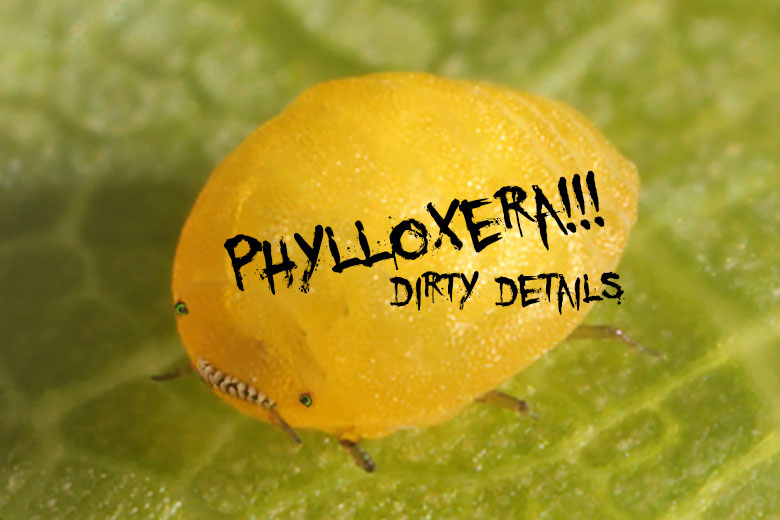It was 1863 when all around France suddenly grape vines started dying at astonishing rates. The winemakers pulled up the dead vines and planted new ones. But within a few weeks the new plants had succumbed to the mysterious grape-plague. Entire vineyards withered and turned to vine-grave-yards.
A clued-in botanist discovered that the roots of the dead vines were covered by a wriggling coat of little yellow insects. His magnifying glass revealed an unknown creature unrecorded in any botanical volume at the time. He termed this grape louse Phylloxera Vastatrix, 'The Destroyer'.
As the phylloxera is a gynandromorph, it can reproduce itself. It is able to produce a staggering amount of fertilized eggs in one go. The slightest breath of the wind will carry the eggs along and spread them around the vineyards.
When the eggs hatch hundreds of larvae come swarming out, these are known as 'the crawlers'. The starving newborns pounce on the leaves and feed themselves with the juice they extract from the veins. Their bite is poisonous and has an instant effect. After this feeding frenzy they rush down into the earth where they start infesting the soil. |
|
During the infamous plague the French tried everything they could to curb it; they pulled up all the dead vines, sprayed with insecticides; vineyards were cloaked in a yellow haze of toxins, funeral pyres for the dead roots send up inky black clouds of smoke that obscure the horizon. But the torrent was unstoppable; the wine plague was immune to every effort.
France's vineyards were brought mercilessly to the brink of extinction. Sumptuous green valleys turned into desolate necropolises where gnarly dead vines poked out of the barren earth..
And what is more; the grape killer did not stop at the border. Leaving a trail of death and destruction in its wake, it carved a bloodstained path through Europe and within a few years there wasn't a living grape plant to be found anywhere in France, Germany, Spain, Italy, Portugal or even Russia.
It was not until 1910 that a remedy was found: it turned out that American wine plants were resistant to the grape louse. And since then European grapes are grafted onto roots of American grape species. |
